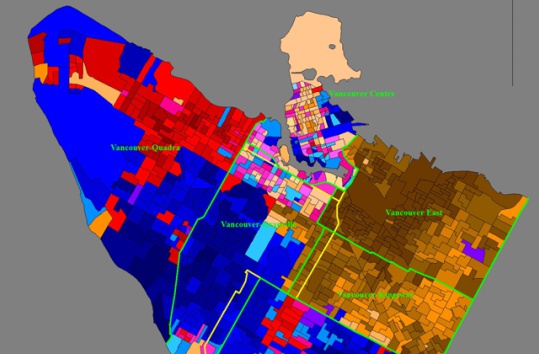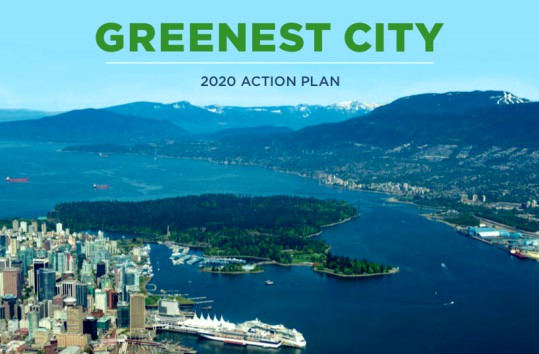Our Latest Blogs
Our Solutions News Blog was envisioned to gather and share information from the very best to help you and your business to become more effective.
Our Solutions News Blog was envisioned to gather and share information from the very best to help you and your business to become more effective.

It also won’t make your marketing program successful, and it certainly won’t drive revenue either. That is — if it’s not integrated into an existing business ecosystem that, ahem, works.
What social media can do is amplify almost any area of your business: customer acquisition, customer marketing, support, PR, HR, business intelligence, sales, and most other business areas you can think of. But mapping social activities to business goals doesn’t happen magically. And while social can certainly help these areas, it’s not going to fix what’s already broke.
Social media is not magic
For example, if your customer care is terrible, hanging out your shingle on Twitter specifically for customer service is not going to solve your organizational problem. In fact, it might expose more faults than it mitigates. If your marketing strategy is nothing more than a program designed to offer tired discounts, then posting those tired discounts on Facebook is not going to make them any more special or exciting.
Another myth is that just by developing and maintaining an engaged community, companies can drive revenue. Think of an engaged community as the supports of your bridge. In order to reach your goals you must build upon that foundation. An engaged community alone will not get you to your goal.
Often there is a BIG disconnect in businesses between the idea and the desired result, as if having a huge amount of Facebook fans will magically put dollars in the bank.
Social media is not a one (or two) trick pony
To be fair, social media can be confusing because it’s often playing several roles simultaneously. It’s kind of like patting your head and rubbing your tummy at the same time because you have to keep the steady drumbeat of content and community management while creating campaigns and programs specifically aimed at meeting a goal.
When people talk about “doing” social media, most often they’re referring to the functions of community management. In essence, community management is the deliberate development of a relationship between a brand and its customers and prospects on a social media channel. At its most basic level, the goals of community management are to:
Can’t buy me love
Sure you can buy Facebook fans and spend lots of money on advertising, but that only buys you exposure, not loyalty or affection. Like any solid relationship, it will take time, persistence, charm, and a deep understanding of your audience for all that effort to pay off.
It also takes a community manager who not only knows your business inside and out, but also has a deep understanding of the technology and tools at their disposal and how specific types of content drive specific engagement “love metrics.”
Community management is hard. It takes time, resources, and a bit of trial and error to get it just right. You also can’t immediately measure business results.
So why do it?
There’s no amount of marketing you can do or money you can spend that will equal the recommendation of friend.
Effective, well-supported community management is a long-tail investment. You may not see the “return” on it for months or even a year, but like any good thing, it’s worth investing in and waiting on because of its potential power. The trick is to nail the community management piece down and then layer in specific business drivers appropriate for the channel.
Source: Constant Contact

The boundaries of the City of Vancouver are not simple, check out their complicated description from the Vancouver Charter below. Does this make any sense to you?
Commencing at a point in the First Narrows of Burrard Inlet, which point is eight hundred (800) feet distant northerly, measured along a line astronomically north from the light in Prospect Point Lighthouse; thence south-easterly in a straight line to a point in Burrard Inlet on the production northerly of the boundary between District Lot Five hundred and forty-one (541) and District Lot One hundred and eighty-five (185), which point is situate at the intersection of the said production with the straight line from the light in Brockton Point Lighthouse to a point in the Second Narrows of Burrard Inlet distant five hundred (500) feet northerly, measured along the production northerly of the easterly boundary of the Town of Hastings from a boundary survey monument set at or near the high-water mark for the southerly shore of Burrard Inlet and on the said easterly boundary of the Town of Hastings; thence easterly along the aforedescribed straight line to the aforesaid point on the production northerly of the easterly boundary of the Town of Hastings; thence southerly, following in succession along the said production northerly of the easterly boundary of the Town of Hastings, the said easterly boundary of the Town of Hastings, the easterly boundary of District Lot Thirty-six (36), the easterly boundary of District Lot Forty-nine (49), the easterly boundary of District Lot Three hundred and thirty-nine (339), the easterly boundary of District Lot Three hundred and thirty-five (335), the easterly boundary of District Lot Three hundred and thirty-one (331), and along the production southerly of the said easterly boundary of District Lot Three hundred and thirty-one (331) to intersection of the same with a line drawn parallel to and two hundred (200) feet perpendicularly distant southerly from low-water mark of the north bank of the North Arm of Fraser River; thence in a general westerly direction, following the said line drawn parallel to and two hundred (200) feet perpendicularly distant southerly from low-water mark of the north bank of the North Arm of Fraser River to intersection of the same with the production southerly of the westerly boundary of District Lot Three hundred and eleven (311); thence southerly along the said westerly boundary of District Lot Three hundred and eleven (311) thus produced to the centre line of the North Arm of Fraser River; thence in a general westerly direction, following the said centre line and continuing along the centre line of the channel of navigation of the North Fork of the North Arm of Fraser River, passing to the north of Sea Island, Richmond Island, Christopher Wood's Island (D.L. 309), Iona Island (D.L. 236), and to the south of Cowan Island (D.L. 307), Stewart Island (D.L. 308), and Doering Island (D.L. 306), to intersection of the said centre line of the channel of navigation with the production southerly of the easterly boundary of Musqueam Indian Reserve Number Two (2); thence northerly along the said easterly boundary thus produced to intersection of the same with a line drawn parallel to and five hundred (500) feet perpendicularly distant southerly from the south-westerly boundary of the said Indian reserve; thence in a general north-westerly direction, following the said line drawn parallel to and five hundred (500) feet perpendicularly distant southerly from the south-westerly boundary of the said Indian reserve to the intersection of the same with the production southerly of the most westerly boundary of the said Indian reserve; thence northerly along the said westerly boundary thus produced and along the said westerly boundary to the north-westerly corner of the said Indian reserve; thence easterly, northerly, and easterly, following in succession along the northerly boundary of the said Indian reserve to intersection of the same with a line drawn parallel to and thirty-three (33) feet perpendicularly distant westerly from the westerly boundary of District Lot Three hundred and twenty (320); thence northerly, parallel to and thirty-three (33) feet perpendicularly distant westerly from the said westerly boundary of District Lot Three hundred and twenty (320), and continuing northerly, parallel to and thirty-three (33) feet perpendicularly distant westerly from the westerly boundary of District Lot Two thousand and twenty-seven (2027) to intersection of the same with the line perpendicular to the said westerly boundary of District Lot Two thousand and twenty-seven (2027) from the south-west corner of Block Eighteen (18) therein; thence westerly at right angles to the said westerly boundary of District Lot Two thousand and twenty-seven (2027) a distance of four hundred and ten (410) feet; thence northerly, parallel to the said westerly boundary of District Lot Two thousand and twenty-seven (2027) a distance of six hundred and sixty-seven and seven-tenths (667.7) feet, more or less; thence easterly along the arc of a circular curve to the right, having a radius of curvature of one thousand four hundred and fifty (1,450) feet, and arc distance of three hundred and eighty-one and four-tenths (381.4) feet, more or less, to a point of tangency to and on the production westerly of the line perpendicular to the aforesaid westerly boundary of District Lot Two thousand and twenty-seven (2027) from the north-west corner of Block Nineteen (19) therein, which point of tangency is situate sixty-six (66) feet distant westerly, measured along the said perpendicular line from the said corner of Block Nineteen (19); thence easterly along the aforesaid perpendicular line to intersection of the same with a line drawn parallel to and thirty-three (33) feet perpendicularly distant westerly from the westerly boundary of District Lot Two thousand and twenty-seven (2027); thence northerly and parallel to the said westerly boundary of District Lot Two thousand and twenty-seven (2027) to intersection with the production easterly of a line drawn parallel to and thirty (30) feet perpendicularly distant south from the southerly boundary of Block Two hundred and ninety-two (292), District Lot One hundred and forty (140); thence westerly following in the said production easterly of a line drawn parallel to and thirty (30) feet perpendicularly distant south from the southerly boundary of Block Two hundred and ninety-two (292), and continuing westerly in the said line drawn parallel to and thirty (30) feet perpendicularly distant south from the southerly boundary of said Block Two hundred and ninety-two (292) to an intersection with the southerly production of a radius passing through the beginning of a curve to the right in the said southerly boundary of Block Two hundred and ninety-two (292); thence westerly and north-westerly in the arc of a curve to the right of radius one hundred and eighty-nine and seven-tenths (189.7) feet concentric with the said curve to the right in the southerly boundary of Block Two hundred and ninety-two (292) to an intersection with the south-westerly production of a radius passing the end of said curve to the right in the southerly boundary of Block Two hundred and ninety-two (292); thence north-westerly in a straight line drawn parallel to and thirty (30) feet perpendicularly distant south-westerly from the said southerly boundary of Block Two hundred and ninety-two (292) to an intersection with the southerly production of a line drawn parallel to and seventy (70) feet perpendicularly distant westerly from the westerly boundary of said Block Two hundred and ninety-two (292); thence northerly in the said southerly production of a line drawn parallel to and seventy (70) feet perpendicularly distant westerly from the westerly boundary of Block Two hundred and ninety-two (292) and continuing northerly in the said line to an intersection with the westerly production of a line drawn parallel to and fifty (50) feet perpendicularly distant north of the northerly boundary of said Block Two hundred and ninety-two (292); thence easterly in the said westerly production of a line drawn parallel to and fifty (50) feet perpendicularly distant north of the northerly boundary of Block Two hundred and ninety-two (292) and continuing easterly in the said line to an intersection with the northerly production of a radius passing through a beginning of curve to the right in the said northerly boundary of Block Two hundred and ninety-two (292); thence easterly in the arc of a curve to the right of radius nine hundred and fifty-five and thirty-seven one-hundredths (955.37) feet concentric with the said curve to the right in the northerly boundary of Block Two hundred and ninety-two (292) to an intersection with the northerly production of a radius passing through the end of said curve to the right in the northerly boundary of Block Two hundred and ninety-two (292); thence easterly in a line drawn parallel to and fifty (50) feet perpendicularly distant north of the said northerly boundary of Block Two hundred and ninety-two (292) to intersection with the northerly production of a line drawn parallel to and one hundred (100) feet perpendicularly distant west of the westerly boundary of Lot C in said Block Two hundred and ninety-two (292); thence northerly in the said northerly production of a line drawn parallel to and one hundred (100) feet perpendicularly distant west of the westerly boundary of Lot C in Block Two hundred and ninety-two (292) a distance of fifty (50) feet; thence easterly in a line drawn parallel to and one hundred (100) feet perpendicularly north of the said northerly boundary of Block Two hundred and ninety-two (292) to intersection with the northerly production of the said westerly boundary of Lot C; thence southerly in the said northerly production of the westerly boundary of Lot C to a point in the said northerly boundary of Block Two hundred and ninety-two (292); thence easterly in the said northerly boundary of Block Two hundred and ninety-two (292) and the easterly production thereof to a point in the said westerly boundary of District Lot Two thousand and twenty-seven (2027); thence northerly in a straight line to the north-west corner of the said District Lot Two thousand and twenty-seven (2027); thence northerly in a straight line to a point on the centre line of Eighteenth Avenue produced westerly, which point is situate thirty-three (33) feet distant westerly, measured along the said centre line thus produced from its intersection with the westerly boundary of Block Forty-four (44) in District Lot One hundred and thirty-nine (139); thence westerly, parallel to the centre line of Sixteenth Avenue (which centre line shall be deemed to be, for the purpose of this description, that line drawn parallel to and sixty-six (66) feet perpendicularly distant southerly from the northern limit of Sixteenth Avenue) to intersection of the same with the centre line of Discovery Street; thence northerly along the centre line of Discovery Street to intersection of the same with the said centre line of Sixteenth Avenue; thence westerly along the centre line of Sixteenth Avenue to intersection of the same with a line drawn parallel to and thirty-three (33) feet perpendicularly distant westerly from the westerly boundary of Block One hundred and sixty (160) in District Lot Five hundred and forty (540); thence northerly, parallel to and thirty-three (33) feet perpendicularly distant westerly from the westerly boundaries, in succession, of Blocks One hundred and sixty (160), One hundred and fifty-nine (159), One hundred and fifty-two (152), One hundred and fifty-one (151), and One hundred and forty-four (144) respectively in District Lot Five hundred and forty (540) to intersection of the same with the centre line of Sixth Avenue; thence westerly along the centre line of Sixth Avenue, being along a curve to the left, concentric with and radially distant forty (40) feet southerly from the southerly boundary of Block Seven (7) in District Lot One hundred and forty (140), to intersection of the same with the continuation southerly of the curve, concentric with and radially distant thirty-three (33) feet westerly from the westerly boundary of the said Block Seven (7) in District Lot One hundred and forty (140); thence northerly along the said curve, concentric with and radially distant thirty-three (33) feet westerly from the said westerly boundary of Block Seven (7) in District Lot One hundred and forty (140), and along the continuation northerly thereof, to intersection of the same with the centre line of the one-hundred-and-twenty-foot street lying between Blocks Six (6) and Seven (7) in District Lot One hundred and forty (140) (which street is now known as "Fourth Avenue"); thence westerly along the centre line of the said one-hundred-and-twenty-foot street to intersection of the same with the production southerly of the westerly boundary of Block Five (5) in District Lot One hundred and forty (140); thence northerly along the said production, and continuing northerly along the westerly boundaries, in succession, of Blocks Five (5), Three (3), and One (1) respectively in District Lot One hundred and forty (140) to the north-west corner of the said Block One (1); thence continuing northerly along the production northerly of the said westerly boundary of Block One (1) in District Lot One hundred and forty (140) a distance of forty (40) feet, more or less, to a boundary survey monument set at or near the high-water mark of Burrard Inlet; thence along a line bearing astronomically north, thirteen (13) degrees east, a distance of two thousand (2,000) feet; thence easterly in a straight line to a point in English Bay of Burrard Inlet, which point is situate astronomically north and three thousand (3,000) feet distant from a boundary survey monument set on the boundary between District Lot Five hundred and twenty-six (526) and District Lot One hundred and ninety-two (192) and set at a distance southerly from high-water mark of English Bay of approximately fifty (50) feet; thence astronomically north to intersection with a line drawn astronomically west through the aforedescribed point of commencement; thence astronomically east to the said point of commencement; each and every of the district lots herein mentioned being more particularly described as being in Group One (1), New Westminster District of the Province of British Columbia.

You've probably noticed how marketing is getting "smarter".. Perhaps the recent travel brochure you received in the mail was personalized and aptly about the vacations destinations you're interested in, or the new site you just subscribed to sends you emails only about the interests you've chosen. Yes, it's everywhere and it's not going away.
So as a marketer we need to know how it works and how can you use this amazing tool to improve your customer experience and generate more sales. Lots of people are searching about it every day and so we wanted to break it down once and for all. What is smart content and how will it impact your success.
Variable Data Printing
Our soon to be launched Online Print Shop does it all for you, with complete integration so that you can create a mailing piece, link it to your customer database and mail it to their doorstep all in one easy to use online application.
What's behind the change is the marriage of reliable, high-speed digital printing and sophisticated database software, which combine to produce one-to-one marketing using variable data printing, or VDP. Communicators now have the ability to customize messages more precisely than ever before, and they're going to town with it. The growth of variable data printing has spawned new terminology. Conventional printing with no variable data is now sometimes referred to as "static" printing. "Personalized" variable data printing means that the name and address is changed, but nothing else. Although examples are fairly rare, the ultimate in VDP is full customization, where virtually every major element of the publication can be varied in multiple combinations.
Give us a call at 604-681-7504 to discuss how we can make your printing, well - smart.
To learn more about this fascinating new approach to marketing click Here »
Source: Hubspot & XMPie

According to American Business Media’s “Value of B-to-B” report, B2B information seekers continue to rely on print as a source for industry related content and publishers report that print remains a key source of revenue, nearly a third say they expect to cut their print ad budgets in the next 12 months.
Key findings from the report, which aims to quantifying the role of the B2B information and media industry in the buyer-seller relationship:
Q: How often do you use the following information sources for industry-related content?
Print – 96%
Websites – 96%
Manufacturer product info – 93%
E-newsletters – 92%
Trade Shows – 80%
Print newsletters – 76%
Digital replicas of print newsletters – 69%
Mobile optimized web sites – 56%
Social media – 54%
Mobile apps – 51%
About: Three separate surveys were conducted online by Readex Research between March 11 - April 12, 2013). The polls were created by ABM with advisement from research sponsor Adobe Systems, marketer organizations ANA and IBSA, and several partner media companies. Respondents: 6,682 media end-users (readers, event attendees, etc.) responded to the user poll. 111 publishing professionals and 74 marketers responded to the publishing and advertising polls. Results were cross-tabulated in 11 vertical categories, with the most responses in the retail, building construction, utilities, and healthcare verticals.
Source: Print in The Mix

The City of Vancouver has adopted the Canadian Open Government Licence (OGL), significantly enhancing the City's open data program and marking progress on its Digital Strategy initiative to expand open data.
The OGL is simple and easy to understand, and allows open data to be combined from multiple providers. This is a major step towards encouraging wider use of open data and, in turn, delivering more value to the public.
Our primary goal for adopting the OGL is to enable users to access Vancouver's data under the same legal framework as other government agencies across Canada.
Vancouver joins the Government of Canada, Provinces of BC, Alberta, and Ontario, and the cities of Nanaimo, Edmonton, and Toronto in adopting the OGL.
The OGL was published by the federal government in June 2013 through public consultation and in collaboration with several provincial governments.
Access the City's Open Data Program Here »
Source: The City of Vancouver

Online digital printing encompasses everything be it catalogs, flyers, brochures, visiting cards, greeting cards, banners, signs, tradeshow displays or point of purchase marketing materials. Unlike brick and mortar print stores, online digital printing services are much more beneficial. This article lists five benefits of online printing over traditional print stores, which you just can't ignore.
1. Options galore: When you opt for online digital printing services, you will be astonished at the number of options you have at your fingertips. All you need to do is type a few search words and you will get endless results popping up on your screen in seconds.
2. Affordable: Digital printing services are an affordable option. You can order in volume to get the best pricing or order only what you need right now and save money. Moreover, if you want to dispatch your order to a client's location, you can get it shipped direct with the click of a mouse.
3. Plethora of design options: This is yet another obvious advantage of online digital printing. You get to choose from a variety of design templates, colours, labels and other designs, which match your requirements. You won't get such a wide range of options in a local printing shop in Vancouver or anywhere in Canada for that matter.
4. Open 24/7: Online printing stores don't hang a "closed" sign on their doors (read websites) after certain hours. They are open around the clock. This means you can work on your design whenever you want, be it early in the morning or late at night. This takes us to the next point.
5. Save time: Since online stores are open 24/7, you can price your final order right within the website, without having to wait for their sales representative to get back to you. Something we all know can take days. Also compare the time required to drive through traffic, park your vehicle and then go to a shop and wait to get the work done, and you’ll see you’re way ahead. Sometimes, your time is also spent explaining your needs and requirements over the phone or in person, which is not the case with online printing stores. Thus, you end up saving a lot of your time by opting for such stores.

All it takes is one look around the office or the coffee shop and you’ll see face after face buried in their smartphone or tablet.
Mobile device usage is sky-rocketing. But how many people actually own smartphones? What percentage of email is opened on mobile?
Here are 3 mobile stats that you need:
1.) 133.7 million people in the U.S. currently own a smartphone.
According to comScore’s latest report on the U.S. smartphone market, 133.7 million people owned smartphones as of February 2013. Not only is that number huge, but it’s growing. That number is up 8 percent since November 2012 alone, and it now represents 57 percent of the entire mobile phone market.
A few years ago, it was rare to find someone with a phone that could access email: now it’s the norm.
2.) 43 percent of email is opened on a mobile device.
Not only do many people now own smartphones, but many of are using these devices to check their email. In March 2013, 43 percent of all email was opened on a mobile device, according to Litmus. But that number alone doesn’t tell the whole story. For some comparison, mobile opens were at just 10 percent in 2011 — that’s an incredible 330 percent change. And while mobile opens are skyrocketing, desktop opens are going in the exact opposite direction — down 44 percent over the same time period.
3.) 58 percent of marketers say that mobile will affect their email marketing in the next 12 months.
What’s the top item that will affect email over the next year according to marketers in surveyed in MarketingSherpa’s 2013 Email Marketing Benchmark report? ... Mobile.
58 percent of marketers indicated that smartphones and tablets will have the greatest impact on email over the next year, even ahead of social media. How will it affect their emails? Instead of designing emails for large screens, marketers will need to design emails for fingers and thumbs.
What does this mean for you?
All of these stats make it very clear that email is no longer limited to desktops or laptops. This means that you need to create emails that look great no matter where they will be read — on a desktop, a laptop, a tablet or a smartphone. In the email marketing world, we call these mobile-friendly emails.
Sound complicated?
It’s not. It’s actually a lot easier than you might think and you don’t even need any fancy tech skills. Here are 5 Simple Tips for Mobile-Friendly Emails.
Source: Constant Contact - Fresh Insights

Famed author Mark Twain once said, “Many a small thing has been made large by the right kind of advertising.”
But advertising can be expensive, and in a tight economy, many small businesses cut their marketing budgets first because of cash flow concerns. However, when times are tough, it’s even more important to keep your business brand front and center.
During an economic downturn, clients, customers, and consumers have less money to spend. This means that when they’re ready to buy, you want your brand to be at the top of their list. Social media is undoubtedly one of the most effective and affordable ways to engage your customers and keep your brand top-of-mind, but it’s not the only way. Here are ten tried and true marketing strategies that can help you market your business on a shoestring budget.
1. Craft an elevator pitch
You should be marketing all the time — wherever you are. Therefore, you need a compelling elevator pitch. Research shows the average attention span of an adult is about 6 to 8 seconds. That’s all the time you have to grab someone’s attention. If you successfully engage them, then you only have a little over a minute to really sell them on your product or service. Invest the time to craft a killer elevator pitch. The return on your investment will pay huge dividends in terms of creating business opportunities.
2. Leverage your community
You don’t have to think big when it comes to your marketing efforts. Think locally. What’s going on in your community? Sponsor a Little League team or a 5k charity walk/run. Print bookmarks and leave them at the local library. Get to know your ideal customer and think about how and where they spend their time. Then search for opportunities to get in front of your customer with your marketing message.
3. Collaborate
Put together a group of synergistic, non-competitive businesses in your area and agree to cross-promote. You can use coupons, fliers, reciprocal website links, bundled promotions or social media platforms.(Okay, I had to add a little bit of social media to the mix.) By collaborating with each other, you can expand your customer base because you’ll be reaching new people.
4. Network
I’m a huge fan of networking. I don’t think there is any better way to build a business than to get out there, shake some hands, and get to know people. Networking requires a time commitment and it doesn’t provide instant gratification, but a strong network is one of the greatest assets any business person can have.
5. Give a speech
A lot of people hate public speaking. However, there are many organizations looking for qualified, subject-matter experts who can present to their groups. Take a deep breath and volunteer. You don’t have to be a pro as long as the information you share is helpful to the audience. And the upside — the more you do it the easier it gets. Plus, it positions you as a credible authority in your field.
6. Create buzz
I started my corporate career in the field of public relations and the business has changed significantly because of technology. Today, a small business owner can accomplish a lot without hiring a professional firm. Subscribe to Help a Reporter Out www.helpareporter.com. You can respond to reporters’ queries that are looking for story ideas and resources. Some are small media opportunities, but others are major media outlets that use this service too.
7. Ask for referrals
Don’t be shy about asking for customer referrals. The majority of people say they are willing to provide a referral if asked, but very few take the initiative to do it on their own. Referrals make it easier to get in the door with new customers. If you aren’t asking for them, you are missing opportunities.
8. Build relationships
It is a lot less expensive to keep a customer than it is to get a new one. That’s why establishing strong relationships with your customer base is crucial. One of the ways you can do that is by launching an email campaign. Make your communications informative and helpful — something your customers will look forward to receiving. Social media campaigns are another way to keep the communication channel open (and there I go again.)
9. Offer coupons
Coupons are a good way for many businesses to attract new customers. Research shows that people will go out of their way to use a coupon, proving that this method is successful in expanding your customer base. Coupons can also generate return visits. For example, if you give a customer a coupon for a discount to use on future business, there’s a high probability they’ll be back.
10. Give it away
If someone has the opportunity to experience your product or service, chances are they will want to purchase more. Don’t be afraid to give someone a free trial or a sample. In today’s economy, people are more comfortable purchasing something they have been able to experience first.
These ten, inexpensive marketing strategies will help you engage customers, build relationships, and ultimately keep your brand top-of-mind. It’s not always about the money you have to spend on marketing, it’s about the time and effort you put into it and above all, the relevance it has for your customers.
Source: Constant Contact - Fresh Insights

British Columbia's pioneering carbon tax has been remarkably effective in reducing fuel use, with no apparent adverse impact on the province's economy. This conclusion comes from a new study by Sustainable Prosperity soon to be published in the upcoming issue of Canadian Public Policy.
The study's key findings suggest that since the carbon tax took effect (July 1, 2008), BC's fuel consumption has fallen by 17.4% per capita (and fell by 18.8% relative to the rest of Canada). These reductions occurred across all the fuel types covered by the tax, not just vehicle fuel.
In terms of economic impact, the study findings suggest BC's GDP kept pace with the rest of Canada's over that time, and the tax shift enabled BC to have Canada's lowest income tax rates (as of 2012).
Overall, concludes the study, the tax shift has benefited all taxpayers in that cuts to income and other taxes have exceeded carbon tax revenues by $500 million from 2008-12.
BC brought in North America's first carbon tax in July 2008 and imposed a price on the use of carbon-based fuels. The tax was a central component of BC's climate change strategy, which aims to reduce GHG emissions by 33 percent below 2007 levels by 2020.
The carbon tax was designed to be "revenue neutral", meaning that all revenues were to be used to reduce other taxes, mainly through cuts to income taxes (personal and corporate), as well as targeted tax relief for vulnerable households and communities - resulting in no overall increase in taxation.
The tax was initially set at $10 per tonne of carbon dioxide equivalent (CO2e), but the price was designed to rise by $5 per year thereafter until it reached $30 per tonne (roughly 7 cents per litre of gas) in 2012.
The Sustainable Prosperity study notes that when the carbon tax was brought in, there were predictions that it would harm BC's economy. Now, four years later, the data show that BC's economy has slightly outperformed the rest of the country over the period that the carbon tax has been in place.
So too, notes the study, the ultimate goal of BC's carbon tax is to reduce GHG emissions, by taxing the fossil fuels that cause them. Data on GHG emissions is available only through to 2011, so changes in fuel use (available through 2012) were used as the most current indicator of the tax's effects.
To get a fuller picture on GHG reductions the study compared GHG emissions in BC to emissions in the rest of Canada, counting only those sources that are subject to the BC carbon tax. From 2008 to 2011, BC's per capita GHG emissions associated with carbon taxed fuels declined by 10.0 percent, which the report's authors describe as a substantial reduction.
During this period, BC's reductions outpaced those in the rest of Canada by almost 9 percent. These GHG reductions were similar to those seen in fuel use during this same 2008-11 time period.
The study concludes that on the basis of available evidence, BC's carbon tax has been a highly effective policy to date, contributing both to a significant reduction in fossil fuel use per capita, with no evidence of overall adverse economic impacts. However, it cautions, further economic analysis is needed to reach more firm conclusions about these effects and their causality.
Research conducted by GLOBE Advisors confirms many of the Sustainable Prosperity conclusions, in particular that the carbon tax has helped various stakeholder groups from government, First Nations, educational institutions, and in the private sector to rethink the way they operate and to consider investing in clean technologies or to adopt more environmentally-friendly or lower carbon intensive practices.
The GLOBE Advisors research also suggests that while having a carbon tax provides positive benefits to the province, sustained leadership from both the public and private sector is required to meet the continuing challenge of further reducing the province's carbon footprint and growing BC's clean economy.
This is particularly so given that the carbon tax could be more than carbon neutral, revenue neutral, but could also be used to provide measurable, performance-based improvements for all BC residents and businesses.
The Sustainable Prosperity study notes that the BC experience to date is consistent with the results witnessed in seven European countries that brought in carbon tax shifts in the 1990s, notes the study. In those countries, the tax shifts caused estimated GHG emission reductions ranging from 2 to 7 percent (over a decade or more), according to a major empirical study funded by the EU.
It cautions that BC's carbon tax shift is only 4 years old, so it is too early to draw firm conclusions. But its GHG reductions are trending in the same direction as those seen in European countries with more than 15 years of date. However, it points out, BC's reductions to date appear to be even greater, which is consistent with the fact that its carbon tax rate is now higher and more comprehensive than in most European countries.
Stewart Elgie, Professor of law and economics at University of Ottawa, and the study's lead author, said "BC's experience shows that it is possible to have both a healthier environment and a strong economy -- by taxing pollution and lowering income taxes."
Canada's premiers are meeting from July 24-26 to discuss a proposed Canadian Energy Strategy which includes "a more integrated approach to climate change," Elgie added. "I hope that BC's success will inspire Canada's premiers to show leadership on a national approach to pricing carbon pollution."
His point is well taken. As reported recently in the Globe and Mail, studies undertaken by Environics Research and more recently the Environics Institute shows that a majority (59 per cent) of Canadians outside of B.C. would support the introduction of a B.C. style carbon tax in their own province, a proportion that has been slowly building over the past four years.
Majority support for such a tax was expressed in all provinces except Alberta (at 43 per cent), and is most widespread in Quebec (67 per cent), followed by Manitoba (59 per cent), Saskatchewan (58 per cent), Ontario (58 per cent) and Atlantic Canada (54 per cent).
The Sustainable Prosperity study is available for download Here »
Source: Globe-Net

June 2013 -- With content marketing on the rise, the CMO Council conducted a study of B2B content seekers’ information gathering attitudes, such as what they are seeking from B2B content and the characteristics most valued.
The study found B2B buyers are “turned off by self-serving, irrelevant, over-hyped and overly technical content. They’re migrating to peer-based communities and new sources of trusted, relevant and credible content and conversation.”
Findings:
Characteristics Most Valued in B2B Content:
Characteristics most disliked in B2B content:
B2B content most valued and trusted:
B2B content sources that are most valuable in shaping purchase decisions:
Additional findings:
About: The data is based on a recent survey of more than 400 B2B content seekers around the world, conducted by the CMO Council’s Content ROI Center and distributed by NetLine Corporation’s global content syndication network. Some 41 percent of respondents came from companies with more than $100 million in revenues, and half held titles of director and above. Two-thirds said they had influence on key purchasing decisions or final purchase-making authority.
Source: CMO Council, Print in the Mix

One key part of being a great inbound marketer is understanding how -- and why -- other people think and act the way they do. Think about it for a second. How can you create compelling content if you don’t know why it would be compelling to your audience in the first place? How can you personalize content to reach the right people if you don’t know what type of content they would like, and why they would like it?
Before you start jumping into all the tactical nitty gritty of marketing, it’s really helpful to understand how people operate … which is essentially what the entire field of psychology attempts to explain. Understanding some key principles in psychology can take your content from good to amazing, all because the right audience is reading and identifying with it. Bonus: if you understand these principles and weave them into your marketing, you’ll also convert more visitors into leads, and leads into customers.
Many of these psychological concepts can be used across many aspects of your marketing, but we’re just going to give one example for each. They also aren’t universal; we all know people who are outliers, do we not? With that in mind, let’s get started!
9 Important Psychology Concepts You Can Use in Your Marketing
1) Reciprocity
Introduced in Dr. Robert Cialdini’s book, Influence: The Psychology of Persuasion, the concept of “reciprocity” is simple -- if someone does something for you, you naturally will want to do something for them. No, this isn’t bribing. If you can act in a sincere and giving way, the other person will naturally want to help you.
When You Could Use This in Marketing
Give away something -- for free -- to help build community or customer loyalty. You don’t have be rolling in dough to give something away; it can be anything from a branded sweatshirt, to an exclusive ebook, to a free desktop background, to your expertise on a difficult subject matter. Even something as simple as a hand-written note can go a long way in establishing reciprocity. By delighting your audience with these small gifts, you’ll be one step closer to establishing a true, solid relationship with your visitors, leads, and customers.
2) Commitments
Another principle developed by Cialdini, “commitments” is another way of saying that people don’t like breaking their promises. If someone commits to something -- whether it is meeting for lunch or signing up for your product, they feel like they’ve made an obligation to you. Once they make that commitment, people will be much less likely to bail.
When You Could Use This in Marketing
This is a great way to fight customer churn. Though you should never stop trying to delight your customers (per principle #1), it’s important to keep in mind that the longer the commitment they make to you, the harder it could be for them to churn. Think about your pricing structure. Can you lower prices but have new customers sign up for 12 months instead of one? Then, once you’ve gotten your customers’ commitment, fuel it by offering great products and customer service -- and maybe even customer-specific content.
3) Authority
Most people naturally obey authority figures, according to another principle in Cialdini’s book. When we view someone as having authority, we’ll be much more likely to trust his or her opinions and suggestions, simply because we believe the person is credible.
When You Could Use This in Marketing
Amp up your authority in your content by prominently featuring authors’ information alongside their blog posts, ebooks, whitepapers, or videos. This way, your audience can see just how smart and amazing your inbound marketers are, which can be a step in the right direction if you’re trying to establish thought leadership as a brand.
4) Social Proof
We’ve talked about social proof a few times on the blog already, but basically, it boils down to a situation in which you adopt the beliefs or actions of a group of people you like or trust. In other words, it’s the “me too” effect. Think of this like an awkward middle school dance -- few people want to be the first one on the dance floor, but once a few people are there, everyone else wants to join in. (Keep in mind, this desire to conform doesn’t go away when you get older and less bashful about your dance moves.)
When You Could Use This in Marketing
One easy way to make the most of social proof is on your blog -- if you're not already, use social sharing and follow buttons that display the number of followers your accounts have or the number of shares a piece of content has. If those numbers are front and center and you already have a few people sharing your post, people who stumble on your post later will be much more likely to share.
5) Liking
Another psychological theory by Cialdini, “liking” means that if you feel positively toward another person or company, you’ll be much more likely to interact with them or buy from them. It may not matter how smart the other person is or how profitable the company is -- if you think they’re cool, you’ll want to be seen with them more often.
When You Could Use This in Marketing
Liking is crucial to developing your company’s brand. Keep in mind that being “likeable” doesn’t have to mean being “nice.” Your brand could be raunchy and kind of offensive … but if your audience likes it, you can still take advantage of “liking.” You just want people to feel positively affiliated with your brand. So however you make that happen, it's worth a try.
6) Scarcity
Ever gone to buy airline tickets and seen a tagline that says “only 3 seats left at this price!” Yup, that’s scarcity (again, another Cialdini concept). This psychology principle goes back to the simple formula of supply and demand: the more rare the opportunity, content, or product is, the more valuable it is. Note: If you want to properly use this principle, you need to be careful how you word it. If you approach the scarcity concept as if there used to be a ton of a product or service, but due to popular demand there’s a few left, people will be very receptive. On the other hand, if you approach it from the angle that there are only a few products total, so get it now, the principle won’t be as effective. Check out this post from Nir and Far for a deeper explanation on why that distinction is important.
When You Could Use This in Marketing
This could be a great tactic to use when planning events. If you’re looking to increase ticket sales, it might be worth sending a personalized email to people who haven’t registered yet to remind them that there are only X number of tickets left since so many people have registered.
7) Recency Illusion
Ever heard about a product and then start seeing it everywhere you look? While that may be part of some clever ad retargeting online, it most likely is because of the “recency illusion.” It starts happening after you encounter something for the first time, and then you start noticing it everywhere you look.
When You Could Use This in Marketing
This is important to keep in mind when you’re designing marketing campaigns -- you should be aiming to develop robust, integrated campaigns, not just a one-and-done piece of content. By not pigeon-holing your inbound marketing to one type of content on one platform, you not only expose your content to new audiences, but more importantly, keep reinforcing your message with people who have encountered previous marketing pieces.
8) Verbatim Effect
According to this psychological concept, people are more likely to remember a fuzzy, general idea of your content -- not the longer, more detailed piece you originally created. For example, people will most likely remember that your presentation was generally about blogging for business -- not necessarily the details about writing and editing blog content.
When You Could Use This in Marketing
In our world today, people are headline-hungry. Given the “verbatim effect,” you should try to pack as much relevant and descriptive information into your headline as you can. Besides the fact that your headline will be fighting for attention all on its own on social media (as opposed to being accompanied by the full article text), your headline is only a few words that sum up your entire post. So use it wisely -- it may be all that your readers remember. If you need some help writing compelling headline copy, check out this post on our blog.
9) Clustering
People have a limited amount of space in their short-term memory. In fact, most people can only remember seven pieces of information (plus or minus two pieces in any given situation) at a time. To cope, most people tend to cluster similar pieces of information together. For example, if you had a whole grocery list of random items, most people would tend to mentally group items into certain categories (dairy, grain, meat, etc.) to be able to better remember what exactly was on the list.
When You Could Use This in Marketing
Do the legwork for your audience: group similar topics in your writing together -- either under numbered bullet points or with different header sizes. Besides being much easier to scan, your writing will be much easier to remember and recall down the road -- especially if you’re creating long lists of content.
Source: Hubspot.com

Vancouver City Council received an update today on the Greenest City Action Plan (GCAP), and heard that the City has achieved a four per cent reduction in greenhouse gas emissions since 2007, while Vancouver’s economy and population both grew significantly.
“The 2013 update on the Greenest City Action Plan shows we’re making good progress, but there is much more to do,” said Mayor Gregor Robertson. “The costly impacts of climate change require us to continue working hard and strengthening our partnerships with other levels of government, business and labour communities, and our neighbourhoods and residents.
“Cities around the world are grappling with the effects of climate change, and in Vancouver we’re proving that you can have a strong, healthy economy while reducing carbon pollution. The climate crisis is a daunting global challenge and Vancouver’s leadership shows other cities what can be achieved, so it’s crucial that we keep raising the bar.”
The 2013 GCAP report to Council included an update on the 10 goals outlined in the plan, which collectively strengthen Vancouver’s natural environment, create new economic opportunities, and further establish Vancouver’s reputation as a city that balances economic growth with environmental leadership.
The accomplishments outlined in the report include:
In addition to these accomplishments, Council heard about the significant work ahead that is necessary to achieve the ambitious targets in the Greenest City Action Plan. From local food production and security to green transportation, access to nature and a lighter footprint, the 10 GCAP goals call for local and international leadership. They set out a clear path towards a bright green future for our community and our planet.
To learn more about the plan and read the 2013 GCAP Implementation Update, or to see an interactive map of green projects in Vancouver, please visit Vancouver.ca/greenestcity »
Source: Vanvantage.com

Golder Associates Ltd. and the Union of Nova Scotia Municipalities' (UNSM's) Municipal Sustainability Office are launching a new guidebook - From Great Ideas to Great Communities - to help municipalities implement their Integrated Community Sustainability Plans (ICSPs).
This guide will help municipalities to translate their long-term goals and ideas into meaningful action on the ground.
The guide demonstrates how municipalities can build a culture of sustainability and integrate sustainability goals and principles into their daily operations and decision-making. Designed to be practical and easy to use, it includes a seven-part framework for action, step-by-step guidance, and priority strategies and actions for moving forward with the implementation process.
"We want each and every one of our municipalities to be successful in reaching their sustainability goals, and we anticipate that this guide will serve as a roadmap to help them along the journey," declared Councillor Frank Fawson, Municipality of the District of Lunenburg and Chair of UNSM's Sustainable Practices Committee.
The guide was prepared by Chris Lindberg and his team at Golder Associates Ltd. with support from The Natural Step Canada. It draws on examples and resources from various municipalities in Nova Scotia and across Canada that have had success with implementing their ICSPs.
"Nova Scotia has demonstrated real leadership in working with its municipalities on sustainability planning," says Senior Sustainability Specialist at Golder Associates and lead-author Chris Lindberg.
"We're very excited to launch this guide and help accelerate the implementation process. While the guide focuses on Nova Scotia, the framework, process and practices are relevant for municipalities all across Canada. We're looking forward to working with municipalities to make sustainability happen in their communities."
The guide and a wide variety of supporting resources are also available for download here »
Source: Globe-Net

Mission statements. They sound inherently business babbly, don't they? But even if you think they're a little ... silly ... they're really important guideposts for making decisions, staying inspired, and setting a bigger picture that gives your day-to-day work purpose.
Problem is, because the idea of a mission statement is so vague and broad, a lot of companies have trouble nailing one down. I did some research on companies with excellent mission statements, and pulled out the characteristics they all have in common. This post will show you how to write a great mission statement, told through the lens of some of the best ones out there.
Common Mistakes People Make When Writing Mission Statements
1) It's too long. (This will, ironically, be the longest section of the post.)
In one of my first "real world" jobs, my boss -- the CEO -- asked me to write a mission statement for the company. I knew they were supposed to be pretty short, so I wrote a couple paragraphs.
Wrong. Thank you for playing, Take this toaster as a lovely parting gift.
Just kidding, he didn't fire me, but we were both equally as clueless about how to write a great mission statement. The first thing to know is that they should be really short -- as in, like, a sentence. Maybe two. Check out Southwest Airlines' mission statement, for example:
"The mission of Southwest Airlines is dedication to the highest quality of Customer Service delivered with a sense of warmth, friendliness, individual pride, and Company Spirit."
To give you an idea, I probably would have written that something like:
"Southwest Airlines' mission is all about customer service. Not just any kind of customer service -- but high-quality customer service -- whether at ticketing, on the plane, in the terminal, even on our website. This should come through in a few places. First, warmth. Warmth means ... "
And on, and on, and on ... and on ...
Make it short and sweet. If you can't say it in a sentence or two, you haven't really nailed the mission statement.
2) You're thinking too small.
Think beyond the tactical. Your mission isn't to create widgets. That's what you do -- but it's not why you do it. Take a cue from Microsoft, for example. Its most recent mission statement is:
"To enable people and businesses throughout the world to realize their full potential."
I consider this a huge improvement from its previous mission statement:
"A computer on every desk and in every home, running Microsoft software."
Why is it better? The old one wasn't bad, but the new one addresses something bigger than just selling a product. The new mission statement tells you who they want to reach -- people and businesses -- and what they want to help them do through Microsoft's products. It gives Microsoft a reason to exist as a business, beyond just making money.
3) It's not specific.
There's a tendency to work in generalizations when writing a mission statement, because you're trying to encompass ... well, a mission. And missions are big. (Remember, we just talked about not thinking too small.) But if you get too specific, you'll back yourself into a corner.
This isn't the right mindset. You can't be everything to everyone -- otherwise, what's your differentiator? What are you adding to the universe?
Zappos does a great job of communicating a larger mission, without compromising specificity. Their mission statement reads:
"To provide the best customer service possible."
They're not trying to loop in price, quality, changing the world, having the best corporate culture ... they want to provide the best customer service possible. That might include all of the aforementioned when it comes down to tactics, but it doesn't need to be in the mission statement. This is the perfect balance between thinking big, but still being specific.
4) The language is full of jargon.
This is where the business babble starts to creep in. (And often, the business babble creeps in because you're not being specific enough.) We all know what business babble is, so let's just look at a jargon-free mission statement to set the precedent for what we should all be striving for. Google's is an excellent example:
"Google's mission is to organize the world's information and make it universally accessible and useful."
They could have said that like this:
"Google's mission is to utilize the digital information inputs of various sources and outlets and dispense it in a structure optimized for user-understanding."
But they didn't. Because that's ridiculous. (And it's pretty much the opposite of making information "accessible and useful.")
5) It's not something people want to "get behind."
Your mission should resonate with people, particularly you and your employees. It should address a real problem -- or something people care about, at least. Think about why you wanted to get into your business in the first place ... you were probably inspired by something, right? Whatever motivated you then (unless it was for the money, in which case ignore this advice) might be what you want to tap into when crafting your mission statement.
Inspiring mission statements aren't just for nonprofit organizations, either. I happen to think Google's mission statement is one of the most inspiring I've ever heard. Or take a look at Coca-Cola -- how can a beverage company have an inspiring mission statement? Its mission statement is:
"To refresh the world; to inspire moments of optimism and happiness; to create value and make a difference."
That last part is a little vague and verging on business babble (what does "create value" really mean?), but I love that middle part. Your mission statement should be a bit lofty. That's okay. Aspiration is good -- it inspires people to be creative and work hard.
Questions to Ask That'll Help You Write Your Mission Statement
If you're totally stuck on your mission statement, ask yourself the following questions to get the flow of ideas going. Think of it like getting past writer's block ... but, you know, for a mission statement.
1) What do we do?
2) Why did I go into business in the first place?
Or, if you're not a founder of the business ...
3) Why did I want to work at this company/in this industry?
4) What do I want this company's legacy to be?
5) What doesn't matter to this company's legacy?
6) How do I want to help people?
7) What value does our company bring that's unique from other companies?
Remember, your mission statement isn't set in stone. It's actually wise to revisit your mission statement once in a while to see if it still aligns with your company's goals. Some companies, for instance, choose to write mission statements that help them solve a short-term problem their company is facing -- these can be updated later to reflect a larger mission once your short-term issues are addressed.
However you approach your mission statement, just check back every couple years to see if it still aligns with the space you play in, and the world you live in. If your company is around for a long time, it will inevitably change -- your mission statement might have to change along with it.
FWIW, HubSpot's mission statement reads: Our mission is to make the world inbound. We want to transform how organizations do marketing.
And at Dominion Blue our mission statement reads: We will give our customers help in achieving their needs in ways that exceed their expectations. Within the company, we will give each other help in achieving customers’ needs in ways that exceed everybody’s expectations.
What's your company's mission statement?
Source: HubSpot